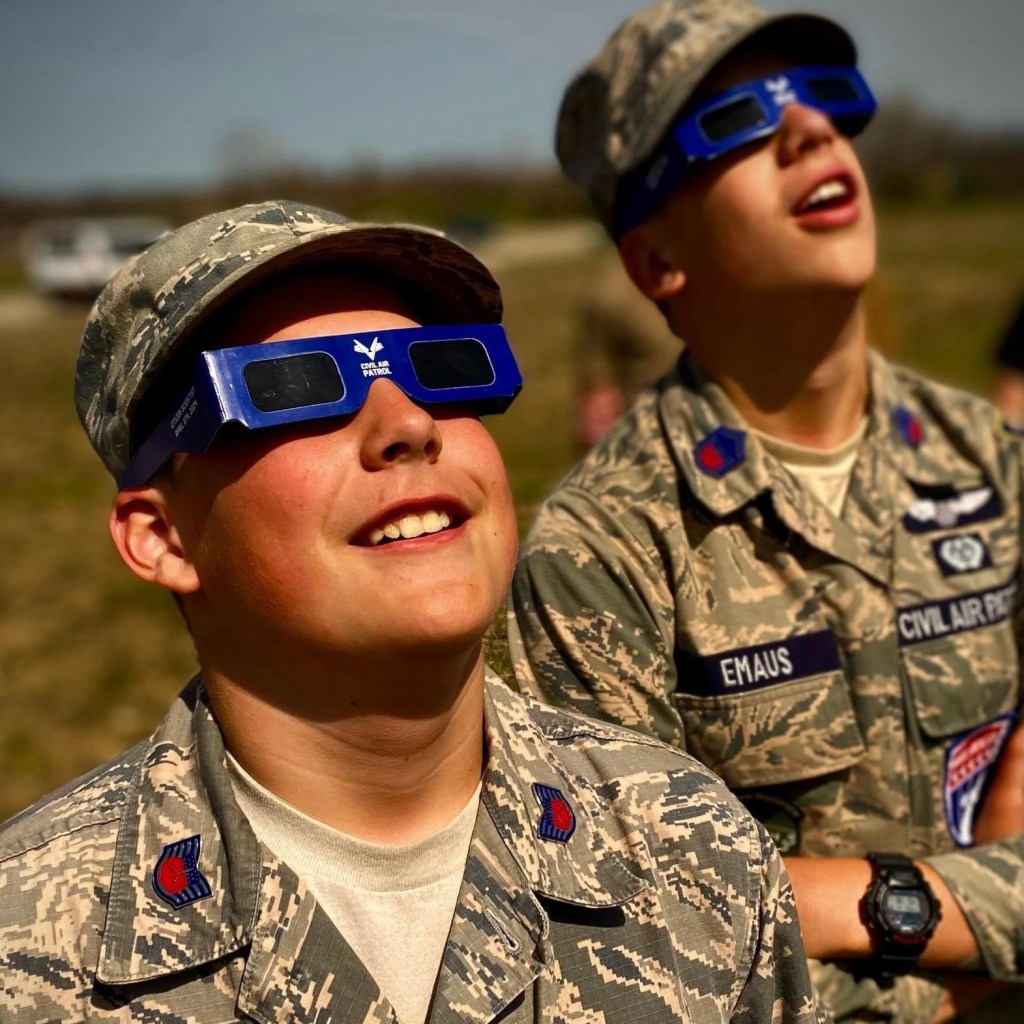Historic Participation in National Eclipse Mission by Civil Air Patrol
In an unprecedented event, the Civil Air Patrol (CAP) successfully orchestrated a nationwide mission that saw the involvement of cadets and senior members from every U.S. state, along with representation from two U.S. territories and two Canadian provinces. This marked the first time such a widespread participation had been achieved in CAP’s history. The mission was a collaborative effort that included over 400 teams, comprising more than 3,000 cadets and over 1,000 senior members. Their objective was to gather crucial meteorological data during a solar eclipse, providing valuable insights into the atmospheric changes associated with such a celestial event.
The operation was spearheaded by Captain Shannon Babb, who meticulously coordinated the mission alongside the aerospace education team from the Rocky Mountain Region. The team’s focus was to record variations in air temperature, cloud formations, wind patterns, and precipitation levels for a comprehensive period of four hours. This timeframe included data collection prior to, during, and after the eclipse, enabling a thorough analysis of the atmospheric conditions.
Understanding the Mission’s Significance
The significance of this mission lies in its scale and the broad geographical coverage achieved, which is a testament to the organizational capabilities of the CAP. The data collected during the eclipse is invaluable for several reasons. Eclipses provide a unique opportunity to study atmospheric changes because they create a temporary but significant alteration in solar radiation reaching the Earth’s surface. By monitoring these changes, scientists can better understand the dynamics of our atmosphere and improve weather prediction models.
The involvement of cadets and senior members in this mission also highlights an important aspect of CAP’s educational objectives. By participating in real-world scientific research, cadets gain hands-on experience and develop a deeper understanding of meteorological science. This practical exposure complements their theoretical learning and encourages them to pursue careers in science, technology, engineering, and mathematics (STEM) fields.
The Role of Technology and Science in the Mission
For this mission, CAP utilized various scientific instruments and technologies to ensure accurate data collection. Thermometers and anemometers were used to measure air temperature and wind speed respectively, while barometers helped in assessing pressure changes. Additionally, sophisticated weather balloons were deployed in some regions to capture data from higher altitudes, providing a more comprehensive view of the atmospheric conditions.
The data gathered is expected to contribute significantly to ongoing research in atmospheric science. Researchers can use this information to study how sudden changes in sunlight affect weather patterns, which is crucial for improving long-term climate models. Furthermore, the collaborative nature of the mission highlights the importance of teamwork and coordination in scientific endeavors, providing a model for future large-scale data collection efforts.
Broader Impacts and Reactions
The success of this mission has garnered attention from various scientific communities and educational institutions. It serves as an example of how volunteer-based organizations like CAP can play a pivotal role in advancing scientific knowledge. The widespread participation also demonstrates the enthusiasm and commitment of young people in contributing to scientific research, which is vital for fostering the next generation of scientists and researchers.
Educators and scientists have praised the mission for its dual impact: advancing scientific understanding while simultaneously educating and inspiring cadets. This dual focus on education and research exemplifies the mission of CAP, which is to foster an interest in aerospace and related fields among young people.
In conclusion, the nationwide eclipse mission executed by the Civil Air Patrol stands as a landmark achievement in the field of citizen science. By engaging over 3,000 cadets and 1,000 senior members in meaningful scientific research, CAP has not only contributed valuable data to the scientific community but has also inspired a new generation of learners. This mission underscores the potential of collaborative efforts in enhancing our understanding of natural phenomena and serves as a blueprint for future endeavors in citizen science.
For more information and updates on similar initiatives, you may visit the official CAP website.
For more Information, Refer to this article.

































